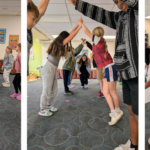
Building Belong Through Movement in Music
March 28, 2025
Summer Jobs for Teens: How Does ADHD Factor In?
April 14, 2025
Scores of successful, high-profile individuals in many fields have dyslexia. Perseverance, creativity and out-of-the-box thinking are just a few of the qualities that help lead to incredible success. However, seeing a child struggle with reading and falling behind their peers, it can be difficult to imagine how such a bright future is possible.
Experts overwhelmingly concur that early identification is key. Molly Bernosky, Ed., S., M.Ed., Springer Diagnostic Center Lead Psychologist, agrees. She recommends a great article recently published in Education Week, which explains more about reading, overlapping diagnoses and outcomes. For her, the article gets to the heart of why her team's comprehensive diagnostic work is so important.
"What Educators Need to Know About Dyslexia--and Why It's not Something to Fix," by Elizabeth Heubeck, includes contributions from several experts. Her article begins by explaining the brain science behind learning to read:
“Reading is not this natural, innate process that develops easily,” said Molly Ness, a reading researcher and literacy specialist with Sterling Literacy Consulting in Denver. “To become a reader, you really have to create neural connections between different regions of the brain.”
Increasingly, researchers are beginning to learn how, for people with dyslexia, the parts of the brain required for reading both look and function differently than those of their typically developing peers. For instance, early research shows that people with dyslexia have a smaller letter box—a part of the brain considered the “visual word-form area,” Ness said.
Additionally, sophisticated technology known as functional magnetic resonance imaging, which measures brain activity by observing blood flow during cognitive tasks, allows researchers to actually see how the brains of people with dyslexia work differently when attempting to read.
“Our students with dyslexia under-activate the neural connections responsible for language and literacy processes,” Ness said.
The takeaway? Because the dyslexic brain has to work much harder to decode words, these students’ fluency and comprehension often suffer as a result.
“You can really start to see this as a neurobiological capacity, and help push past these stereotypes or misconceptions that dyslexia is strictly a visual problem, or that it’s related to intelligence,” Ness said.
The article goes on to explain that dyslexia and ADHD overlap up to 40% of the time, which makes the diagnosis harder, and that accurate diagnosis early in the K-12 journey leads to the best outcomes. To read more about the diagnosis overlap and how reading success may look different for people with dyslexia, continue reading online.
The above excerpt appears here with permission from Education Week.



